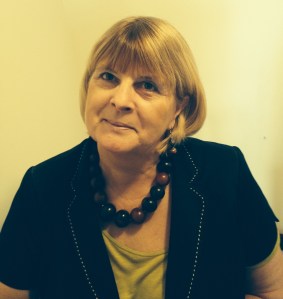Well, what is it? A healthy lifestyle, of course! If we all led one, we’d live fitter, healthier and longer lives, according to a landmark study launched at a recent Healthy Ageing summit.
Nothing new in that, you might think. Newspapers and magazines seem always to be full of stories about health studies proving the benefits of not smoking, sensible drinking, not being overweight, and taking exercise.
True, but the Caerphilly Collaborative Cohort Study is the “big daddy” of them all. For the last 35 years researchers have tracked the lives of 2,500 men aged 45-59 living in the south Wales town, questioning and re-examining them every five years.
And size matters – particularly to academic researchers!
As the largest and longest study into the health behaviours of a representative segment of the population ever carried out, the Caerphilly data is like “gold dust” to public health and health promotion experts alike.
The findings demonstrate unequivocal links between healthy life choices and reductions in diabetes, dementia, heart disease, strokes and cancers.
Professor Peter Elwood, who has led the research from its inception, says the clear evidence base is a “wake-up” call for action.
And Professor Mark Drakeford, Health & Social Services Minister for Wales, calls it “a blueprint for change.”
It’s more proof that people need to be “prudent” and take more responsibility for their own health, he adds.
Like all publicly funded health services, the Welsh NHS is struggling to cope with rising costs and increasing demands from a growing elderly population with chronic long-term conditions. Obesity and chronic ill health alone costs the Welsh NHS £73million a year.
The report shows many illnesses are preventable or can be delayed. And both the minister and the research team hope it will help bring about new partnerships between government, public health, health promotion, voluntary organisations and the public to improve people’s health.
If it does, it will save lives – as well as help cut NHS costs.
At the start of the study in 1979, men were advised to adopt up to five healthy “behaviours.” These were: no smoking, maintaining a low-body weight (BMI 18-25), regular physical activity (e.g. half an hour walking five times a week), a healthy plant-based diet (5-a-day) and low alcohol consumption (within the guidelines).
Unfortunately, few men did so. Less than 1% followed four to five healthy life behaviours, and 40% followed an unhealthy lifestyle – defined as “no healthy behaviour or just a single behaviour”. And sadly, the latest Welsh Health Survey statistics show little has changed in the country in 35 years.
But there have been wider benefits – reaching far beyond Wales. More than 400 studies have been generated from the Caerphilly Cohort Study and published in scientific and medical journals so far. It has also led to two major research initiatives: UK Biobank with 500,000 subjects, and the Medical Research Council’s new Dementias Platform UK.
At the launch of the study findings, Professor Elwood threw out a challenge to every person in Wales “to take up one additional healthy behaviour.”
“If only half do so there could be 12% less diabetes, 6% less vascular disease and 13% less dementia,” he said.
Having finished this blog, I’m getting up off my bottom and going for a swim (my 250 metre local pool recently re-opened after a fire). Yes, I’ve accepted Prof. Elwood’s challenge and aim to be more active. I know it’s not going to be easy. Changing behaviours rarely is, but maybe sharing it will make it less hard.
If you also feel persuaded to take up the professor’s healthy lifestyle challenge, I’d  be interested to hear from you for the book I’m writing on Healthy Ageing. Please leave a comment or tweet me @Jenny__Sims
be interested to hear from you for the book I’m writing on Healthy Ageing. Please leave a comment or tweet me @Jenny__Sims
P.S. Better than any pill – and no side effects! is the title of a booklet launched at the Cardiff University conference on Healthy Ageing held at the All Nations Centre, Cardiff.
